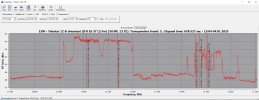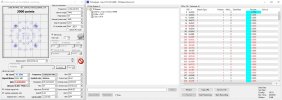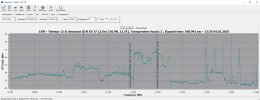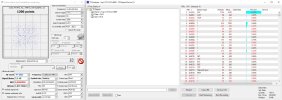Fisty McB
Member
- Joined
- Aug 11, 2012
- Messages
- 442
- Reaction score
- 652
- Points
- 93
- My Satellite Setup
- See my signature...
- My Location
- County Tyrone, N. Ireland
Why am I not seeing a bigger difference between the 80cm and the 1m?
Simple answer - while an increase in dish size will increase the strength of the wanted signal, the signal strength of the unwanted signal is also increased by the same amount. This means that the signal to noise ratio (the noise floor in this case being raised thanks to the interfering wideband data signal on the Mid-Mediterranean beam or Euro Spot 3 beam, depending on your source) remains the same between the two conflicting signals, and once you get above a certain signal strength level, signal to noise is what counts for successful reception. As both the wanted & unwanted signals are equally raised in parallel by increasing dish size, you can't make the signal to noise ratio for your wanted reception any better by increasing the dish size and there's really nothing you can do about it at a given location where this conflict exists - the BBC Satback signal is as much interference limited as it is beam limited. There's nothing new in this - the Saorsat service area is limited to the island of Ireland and the western fringes of Britain thanks to a similar interference limiting multi-beam setup on Eutelsat's Ka-Sat - the folks at Dr. Dish tried receiving it in Germany with a 12 metre dish but had no success!
As for receiving BBC Satback in the Caribbean, unless there is a freakish sidelobe to the North Sea beam that is strong enough not to require a dish rivalling those used for professional radio astronmy, then you have no chance of success. Isn't happening. It's the equivalent of trying to trying to receive Ku-Band signals aimed at the Americas in Conentinal Europe i.e. pretty much a no hoper.









